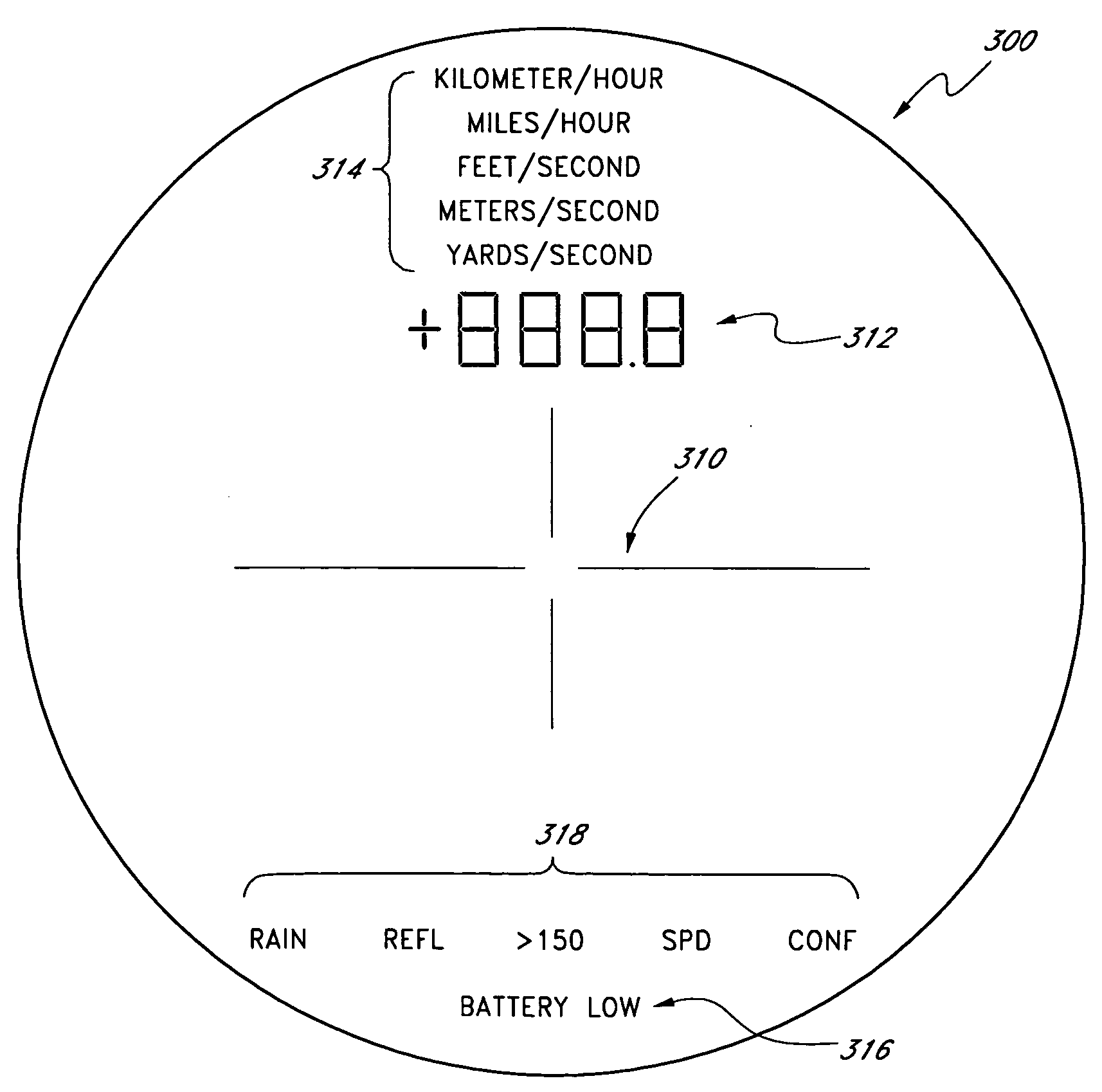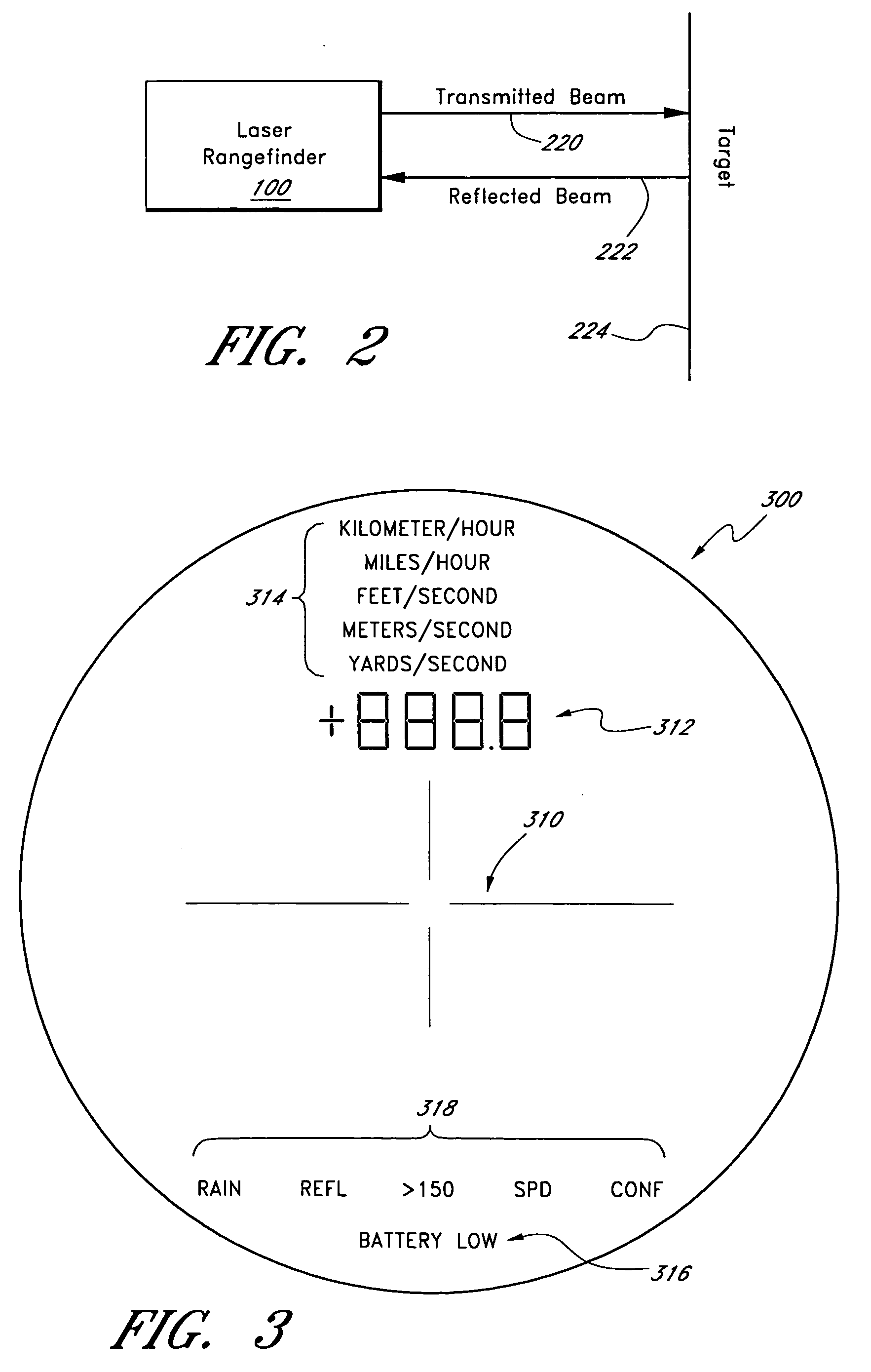Rangefinder with reduced noise receiver
- Summary
- Abstract
- Description
- Claims
- Application Information
AI Technical Summary
Benefits of technology
Problems solved by technology
Method used
Image
Examples
Embodiment Construction
[0033] Aspects or embodiments of the present invention provide a method and rangefinder for measuring a distance between the rangefinder and a target. A rangefinder according to the invention emits an energy pulse towards a target and detects a reflection of the energy pulse from the target. The rangefinder measures an elapsed time between emitting the energy pulse and detecting the energy pulse and, based on the speed of the emitted and reflected energy pulse, converts the elapsed time into a distance measurement.
[0034] According to one aspect of the rangefinder system, a receiver with reduced noise is used to detect weak reflections from distant targets or targets with poor reflectivity. In an embodiment, a rangefinder receiver filters, amplifies and clamps a receiver signal comprising receiver noise and a pulse proportional to a light pulse reflected from a target. The receiver removes low frequency noise components generated by a photodiode configured to receive the reflected b...
PUM
 Login to View More
Login to View More Abstract
Description
Claims
Application Information
 Login to View More
Login to View More - R&D
- Intellectual Property
- Life Sciences
- Materials
- Tech Scout
- Unparalleled Data Quality
- Higher Quality Content
- 60% Fewer Hallucinations
Browse by: Latest US Patents, China's latest patents, Technical Efficacy Thesaurus, Application Domain, Technology Topic, Popular Technical Reports.
© 2025 PatSnap. All rights reserved.Legal|Privacy policy|Modern Slavery Act Transparency Statement|Sitemap|About US| Contact US: help@patsnap.com



